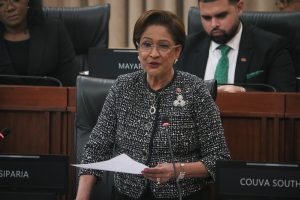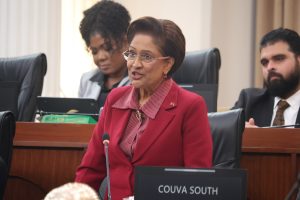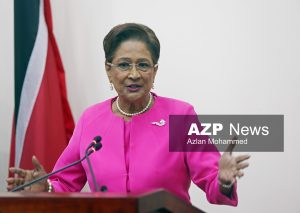By Sue-Ann Wayow
COVID-19 was the reason why Christopher Boodram was not accompanied in an ambulance to the San Fernando General Hospital from Berth #6 at Pointe-a-Pierre last February.
Paria Fuel Trading Company Ltd Health and Safety Executive Coordinator Paul Yearwood on Thursday told the Commission of Enquiry (CoE) that no one was permitted by ambulance officials operating a Global Medical Response Trinidad and Tobago (GMRTT) ambulance.
No decision was also made to have someone follow Boodram, the sole survivor of the Paria-LMCS tragedy.
Yearwood said he found out afterwards that the reason no one was allowed in the back of the ambulance was because of Covid-19 restrictions.
In being questioned by the Commission’s counsel Ramesh Lawrence Maharaj, SC, he was asked why no one accompanied Boodram, into the ambulance to ensure his well-being as well as to maybe find out additional information about the conditions of the pipeline the men were sucked into.
Yearwood said, “I would have asked for one of my team to accompany Mr Boodram.”
Maharaj asked for what purpose.
Yearwood responded, “The primary purpose at that time was to ensure that he receives the best medical care.”
He also told Maharaj that it would also have been able to get information from Boodram.

Yearwood said he asked one of the attendants from GMRTT if it was possible for one of his team members to accompany Boodram, however, he was told it was not the policy to allow anyone to accompany the person in the back of the ambulance. He later corrected his statement saying it was not permitted.
Boodram had also told Yearwood, “Go back for them,” meaning the other four divers who were trapped.
For everyone who spoke with Boodram on February 25 after he emerged from the pipeline when the incident occurred, they all said he kept saying, “Go back for them.”
Yearwood said Boodram was asked what could have been asked, “given the circumstances.”
Chair of the Commission Jerome Lynch, KC, further asked about the ambulance’s refusal to allow some-one to accompany Boodram.
“The reason was at that time, we still going through Covid. So that was why they were not allowing persons to go to the back of the ambulance,” Yearwood said.

Lynch said, “Let me understand this. This man is come out of the pipe, after several hours of being in it. He is brought up by other divers, held in the hyperbaric chamber for a little while because of the bends, … then brought to the surface and unto the berth, he is then taken from there unto a boat and transported by boat to the jetty. All that takes time and he is with other people who is trying to save his life. He is now on the boat, he gets to the jetty and at the jetty he is met by ambulance staff from the hospital and by you and others. He stays about five minutes there and is put on the ambulance. At that point you are being told he can’t have someone accompany him because of Covid regulations?
Yearwood repeated that was what he discovered after.

He also admitted he did not ask why no one was permitted at that time.
Lynch said while it was important for Boodram to get medical attention as soon as possible it was equally important for Yearwood and Paria’s Incident Command Team (ICT) to get as much information as possible about the other four divers.
Yearwood agreed that he also wanted to get as much information as possible.
He said he informed the ICT that no one accompanied Boodram and Lynch then asked why someone did not follow the ambulance if the primary purpose was to ensure Boodram’s well-being.
Yearwood said he also expected that the ICT would have made the necessary arrangements to have someone go to the hospital.
He also said it was his job to provide as much information to the ICT for them to make the decisions.
Lynch asked about who was physically going to follow the ambulance.
“The instruction would have come from the Incident Command Team,” Yearwood said.
He said while he received instructions from the ICT, he can also take initiative.
Lynch asked why he just did not make the decision at the time to have someone follow the ambulance. Yearwood admitted it was not made at the time.
Lynch asked, “What I want to know is why was that not pursued either by you or the IMT?”
“The purpose at the time at the Triage Area was to receive more persons,” was the response.
Lynch asked, “You mean you thought they would all just come out themselves.”
Yearwood answered, “I wasn’t sure at that point in time.”
![]()













